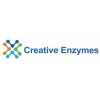Cat No.
NATE-0571
Description
Ubiquitous serine-threonine kinase that phosphorylates a broad spectrum of substrates, and regulates many cellular processes. The catalytic subunit is released following binding of cyclic AMP to the regulatory subunits of the PKA holoenzyme. The free catalytic subunit has intrinsic activity and does not require added cyclic AMP.
Abbr
PKAC, Recombinant (Human)
Alias
PKAC; PRKAC
Source
E. coli
Species
Human
Form
buffered aqueous glycerol solution
Bio-activity
>1000 units/mg protein
Molecular Mass
mol wt 43.5 kDa
Purification
>90% (SDS-PAGE)
Unit Definition
One unit will transfer 1 nanomole of phosphate from 32P-ATP to kemptide substrate per minute at pH 7.4 at 30°C (measured by a radioactive filter-binding assay). Km (ATP) = 25 μM at 30°C, pH 7.4. Km (kemptide) = 42 μM (33 μg/ml) at 30°C, pH 7.4.
Stability
?70°C
Gene Name
PRKACA protein kinase, cAMP-dependent, catalytic, alpha [Homo sapiens]
Synonyms
Protein Kinase A catalytic subunit; Protein kinase A; PKA; PKAC; cAMP-dependent protein kinase catalytic subunit; PRKAC
GeneID
5566
mRNA Refseq
NM_002730
Protein Refseq
NP_002721
MIM
601639
UniProt ID
P17612
Chromosome Location
19p13.1
Pathway
Adaptive Immune System, organism-specific biosystem; Amoebiasis, organism-specific biosystem; Amoebiasis, conserved biosystem; Amphetamine addiction, organism-specific biosystem; Amphetamine addiction, conserved biosystem; Apoptosis, organism-specific biosystem; Apoptosis, conserved biosystem
Function
ATP binding; cAMP-dependent protein kinase activity; cAMP-dependent protein kinase activity; nucleotide binding; protein binding; protein kinase binding; protein serine/threonine kinase activity; ubiquitin protein ligase binding





